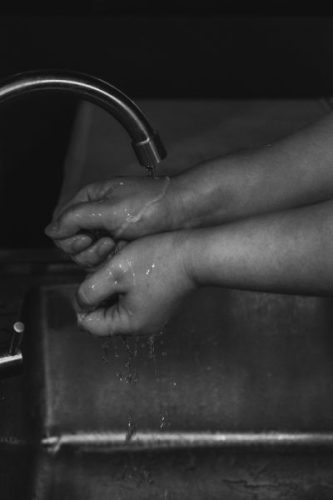The Importance of Mobile Hygiene Units in Emergency Response

Categories :
In the face of disasters and emergencies, the provision of basic needs—such as clean water, sanitation, and hygiene—becomes a critical challenge. Mobile hygiene units stand out as an essential component of the emergency response infrastructure, providing immediate, accessible, and vital services to affected populations.
These units not only help in preventing the outbreak of waterborne diseases but also ensure the dignity and well-being of individuals when they are most vulnerable. This document explores the pivotal role of mobile hygiene units in disaster preparedness and response efforts, highlighting their impact on public health and recovery processes.
Key Components of Mobile Hygiene Units
Mobile hygiene units are ingeniously designed to cater to the immediate needs of disaster-stricken areas. They are equipped with showers, toilets, and sometimes even laundry facilities, ensuring that individuals have access to essential hygiene services. These components play a crucial role in maintaining cleanliness and preventing diseases in temporary shelters or camps. The units often include handwashing stations, which are critical for controlling the spread of infections.
By providing soap and clean water, they encourage good hygiene practices among affected populations, significantly reducing the risk of disease transmission. From shower trailers to portable toilets, each unit is tailored to meet the specific needs of the affected population and can be easily transported to different locations. An added advantage is that these units are self-contained and do not require any external connections, making them suitable for use in remote or disaster-affected areas.
Deployment Strategies
Timely deployment is critical for the effectiveness of mobile hygiene units in emergencies. Strategic planning and coordination with local authorities ensure that these units reach the most affected areas swiftly. This entails having a robust logistics network and a clear understanding of the terrain and infrastructure damage.
Equally important is the mobility of these units, which allows them to be repositioned as the situation evolves. The flexibility in deployment ensures that the units can continue to serve displaced populations as they move to different locations or as new needs arise. Moreover, their compact design enables them to be set up in small spaces, making them ideal for use in crowded or remote areas.
Also, the placement of these units in a central location within temporary shelters or camps ensures that they are easily accessible to all individuals, including people with disabilities and other vulnerable groups. This approach promotes inclusivity and ensures that everyone has equal access to essential hygiene services.
Impact on Public Health
The availability of mobile hygiene units has a profound impact on public health during emergencies. By preventing the outbreak of waterborne diseases such as cholera and dysentery, these units save lives and reduce the burden on healthcare facilities. This is particularly crucial in the immediate aftermath of a disaster when medical resources are often stretched thin. The promotion of hygiene practices through these facilities helps to instill a culture of cleanliness and disease prevention that lasts well beyond the emergency period.
This long-term benefit contributes to a healthier population and a stronger public health infrastructure. The provision of essential hygiene services helps to restore a sense of normalcy and dignity for individuals affected by disasters. By maintaining personal hygiene, people can preserve their health and well-being during times of crisis.
Supporting Vulnerable Populations
Mobile hygiene units are especially beneficial for vulnerable populations, such as children, the elderly, and those with disabilities. These groups are at a higher risk of contracting diseases in emergency conditions due to limited mobility or compromised immune systems. The units' accessibility features ensure that everyone has equal access to hygiene facilities.
In addition to physical health, these units also support the emotional and psychological well-being of vulnerable individuals. The ability to maintain personal hygiene contributes to a sense of normalcy and dignity amid chaos, providing a measure of comfort and stability. This is particularly important for displaced populations who have lost their homes and belongings. By supporting vulnerable groups, mobile hygiene units play a crucial role in promoting equity and social justice during emergencies.
Integration with WASH Programs
Integrating mobile hygiene units with wider Water, Sanitation, and Hygiene (WASH) programs amplifies their effectiveness. Collaboration with organizations specializing in WASH initiatives ensures a comprehensive approach to hygiene needs, combining resources and expertise for maximum impact.
This integration also facilitates the transition from emergency response to long-term development, ensuring that hygiene and sanitation improvements are sustainable. It lays the groundwork for building resilient communities better prepared to handle future disasters.
Challenges and Solutions
Despite their numerous benefits, deploying mobile hygiene units in disaster zones has challenges, including logistical constraints, funding shortages, and cultural barriers. Effective coordination among international agencies, local governments, and non-governmental organizations is essential to overcome these hurdles.
Innovative solutions, such as solar-powered water purification systems and biodegradable toiletries, can help address some of these issues, making the units more environmentally sustainable and culturally sensitive. Continued research and development in this field are crucial for enhancing the efficiency and reach of mobile hygiene units.
The Future of Mobile Hygiene Units
The future of mobile hygiene units looks promising, with advancements in technology and design making them more versatile and effective. Incorporating smart technologies, for example, could enable remote monitoring of resource usage and needs assessment, optimizing the allocation of units where they are most needed.
Additionally, public-private partnerships could play a key role in scaling up the deployment of mobile hygiene units, bringing innovative financing and operational models to the table. As awareness of their importance grows, these units are set to become an integral part of emergency response efforts worldwide, ensuring hygiene and dignity for all in times of crisis.









